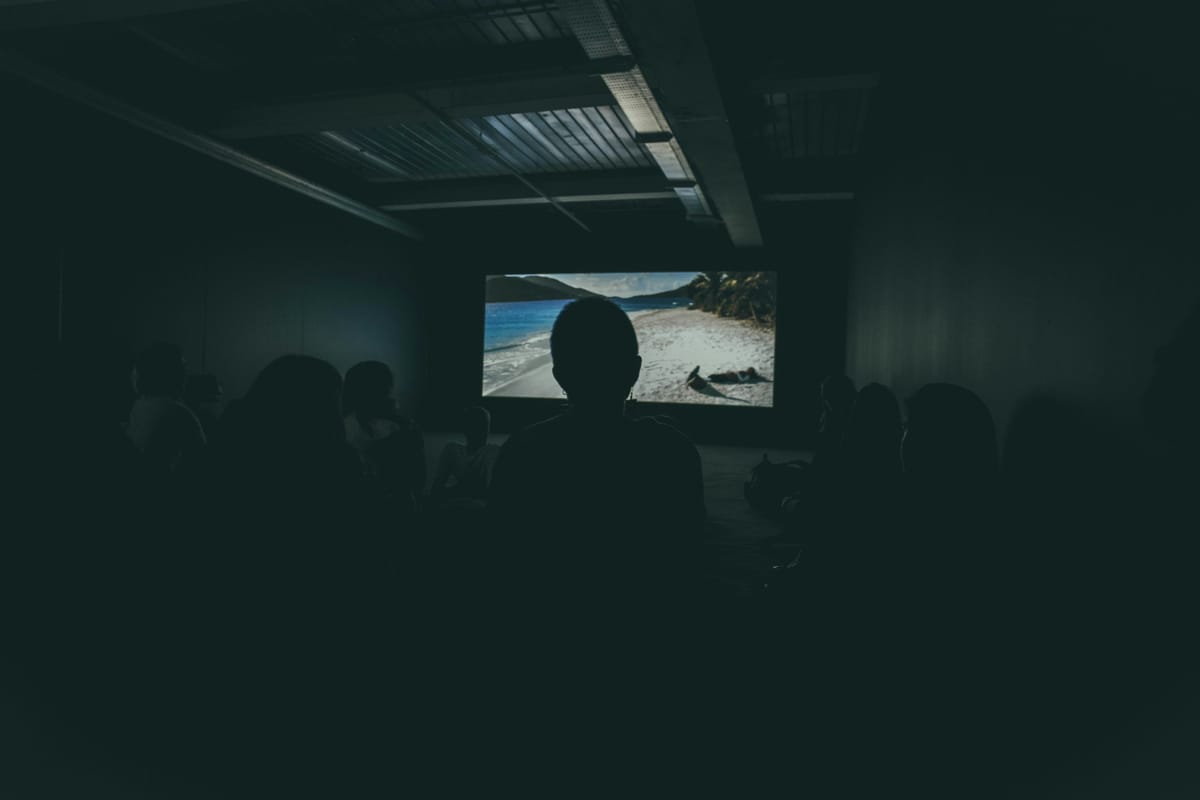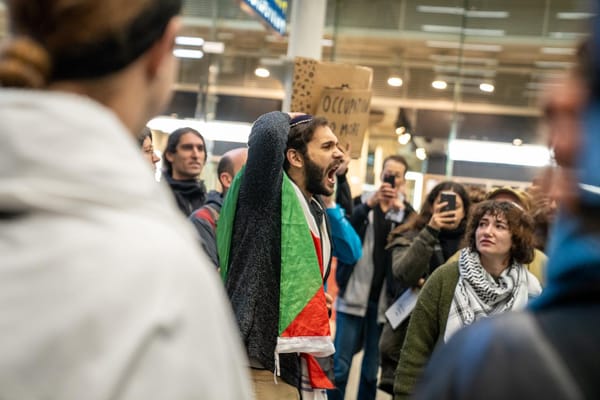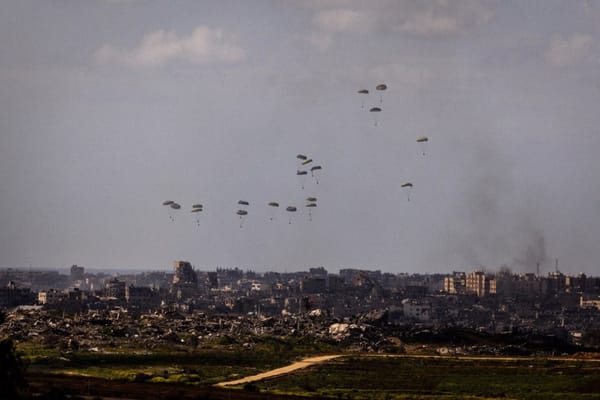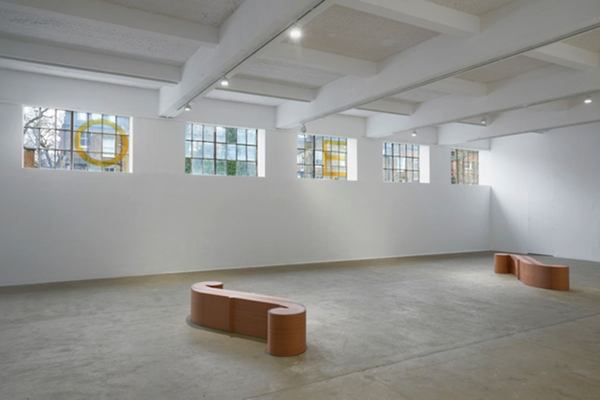Can film unteach Hasbara?
A new documentary considers whether exposure to video footage of the plight of Palestinians can change the hearts and minds of Israel’s fiercest advocates.

Ra’anan Alexandrowicz’s documentary The Viewing Booth has a simple premise. Students at an American university with an interest in Israel are invited to sit and watch a variety of videos documenting life in the Occupied Palestinian Territories. They can view whichever videos they wish, and are asked to describe their thoughts as they watch. As the project gets underway, Alexandrowicz becomes drawn towards one student, Maia. The daughter of Israeli parents and a fervent supporter of Israel, Maia’s responses to videos circulated by human rights organisation B’Tselem take centre stage as we watch her negotiate the images she sees before her. Philosopher Jacques Rancière writes that “There is no straight path from the viewing of a spectacle to an understanding of the state of the world, and none from intellectual awareness to political action.” In The Viewing Booth, Alexandrowicz attempts to forge precisely such a path. The result is a stirring meditation on the question of whether images of suffering can effect change.
Alexandrowicz’s project is born of a desire to expose the violent realities of the Israeli occupation to those most unrelenting in their support for the state. Like most Israelis, Alexandrowicz served in the Israel Defense Forces (IDF) and, like the ex-soldiers whose testimonies are shared by Breaking The Silence, Alexandrowicz wants to illuminate the ongoing horror of the occupation. The documentarian’s 2001 The Inner Tour (2001) records a group of Palestinians’ visit to Israel; The Law in These Parts (2011) exposes the horror and hypocrisy of Israel’s judicial rule in occupied Palestine. Whereas these documentaries sought to directly expose iniquity, Alexandrowicz’s most recent film asks a thornier question: can exposing it actually alter one’s deep-seated convictions?
As Maia views various videos – a nighttime raid on a Palestinian home, a Jewish settler pushing and verbally abusing a Palestinian neighbour, two IDF soldiers assaulting a Palestinian boy – we watch her watch. She is a compelling commentator, in turns reticent and forthcoming. She deliberates out loud. There is much of which she is sceptical, calls “staged” or “overdramatic”. “How are [B’Tselem] always there when these things happen?” she asks. At times, Maia uses words associated with fiction film to describe what she’s seeing: the “introduction”, “dialogue” “scene”. Her encounter with the images is guided by a desire to find them inauthentic.
Her encounter with the images is guided by a desire to find them inauthentic.
Maia’s words recall the response of an IDF policeman to widely-circulated footage of the extrajudicial killing of Abed el Fata a-Sharif in Hebron: “I do not believe what I see.” Film scholar Daniel Mann identifies in the policeman’s words one of the default positions assumed by supporters of the Israeli state when faced with footage like this: a “deep suspicion towards images as truth-claims”.
This suspicion is not entirely unwarranted: over 70 years ago, some of the most influential scholars of the moving image were considering the paradox that while film can capture reality, it can only reproduce it through artifice. As French film critic André Bazin wrote in 1948: “Any aesthetic necessarily makes a choice about what deserves to be saved, sacrificed or rejected.” The photographic image frames what it photographs, is taken from a specific perspective, and can be manipulated, sometimes imperceptibly.
It is these anxieties Maia draws upon to interpret what she sees. She questions why someone knew to film something. Emotional intensity is suspected theatricality. She cites the constructedness of reality TV, like the Real Housewives franchise. The untrustworthiness of any image – what philosopher Jean Baudrillard called “the structural unreality of images” – is invoked to call into question the veracity of these specific images of Israeli violence. A more extreme example of this tendency were Benjamin Netanyahu’s remarks during the 2014 Gaza War that Hamas “use telegenically dead Palestinians for their cause.” Here, the starkness of the image is used to undermine its reality. Scepticism towards the truth-value of the image of Palestinian suffering allows that suffering to be dismissed entirely.
Alexandrowicz’s perhaps quixotic hope that images of the occupation might force ardent supporters of the Israeli state to question their ideological positions is dashed by Maia.
The Viewing Booth opens with a quotation from Virginia Woolf, in which she responds to a letter from a lawyer asking how we might prevent war. She suggests they sit down together to look at images of war: “Let us see whether when we look at the same photographs, we feel the same things.” Woolf’s words intimate that while anyone can look at photographs of war – which were proliferating at the time, amidst the Spanish Civil War – our interpretations of them can differ wildly. Over sixty years later, Susan Sontag would stress that an image’s meanings are “blown by the whims and loyalties of the diverse communities that have use for it.” Both Woolf and Sontag are vindicated in The Viewing Booth, where the chasm between Maia and Alexandrowicz’s perceptions manifest in uncomfortable pregnant silences.
Alexandrowicz’s perhaps quixotic hope that images of the occupation might force ardent supporters of the Israeli state to question their ideological positions is dashed by Maia. Her response confirms documentary scholar Bill Nichols’s observation that “the making of meaning…demands a viewer”. The impasse that swells as The Viewing Booth progresses is rooted in the fact that the images’ meaning is not inherent to them, that what is self-evident to Alexandrowicz is not for Maia.
The impasse that swells as The Viewing Booth progresses is rooted in the fact that the images’ meaning is not inherent to them, that what is self-evident to Alexandrowicz is not for Maia.
At times, however, it seems Alexandrowicz might be onto something. On more than one occasion, Maia says “That’s not okay.” She’s visibly distressed at images of children suffering; she initially cannot justify a soldier kicking a child lying on the ground, and is critical of the “staged” feeling of an IDF video that shows grateful Palestinian children being given cheese by Israeli soldiers. But these moments are fleeting, overwhelmed by her sense of obligation to advocate for Israel. In a poignant sequence, Maia watches a group of teenage boys throw stones up to a balcony as they shout insults. “These look like Arab kids,” she hazards, “I don’t think Israelis would do this.” Upon realising that the boys are Jewish Israelis, she returns to her prior defence: “But then again you have no idea what happened just before this … They could’ve thrown rocks at them, the Arabs throw rocks all the time.” Confronted with the cruelty of the Israeli state, Maia’s commitment to it endures, buttressed by notions of what Jews and Palestinians are “really like”.
Confronted with the cruelty of the Israeli state, Maia’s commitment to it endures, buttressed by notions of what Jews and Palestinians are “really like”.
Maia’s remains the predominant position among Jewish people – though perhaps not for long. From B’Tselem, Breaking the Silence and Machsom Watch in Israel, to Jewish Voice for Peace and If Not Now in the US, to Na’amod in the UK, a global Jewish opposition to Israel’s unjust treatment of the Palestinians is mobilising. They are doing so despite the fact that Jewish critics of the occupation often risk harassment or even ostracism if we draw attention to the violence of the Israeli state. Among many, there is a fear, one described by the philosopher Judith Butler, “that to espouse such criticism [of the occupation] will stoke anti-Semitism”; Maia says she wouldn’t want people to see a video of a Jewish Israeli settler pushing a Palestinian woman and repeatedly calling her a whore, as “it makes Jews look bad”. Yet at what cost does the embarrassment come? To what extent must we warp our morality in its name? These are the questions Alexandrowicz asks, and the growing coalition of Jews who share his perspective.
Maia’s remains the predominant position among Jewish people – though perhaps not for long.
In the final part of The Viewing Booth, Alexandrowicz and Maia meet up again to view her initial responses to the videos. Alexandrowicz is more direct with Maia regarding his intentions, and his disbelief at her obduracy in the face of what she has seen. In their final exchange, Maia reflects, “Sometimes when you question your beliefs and you come up with better answers, they reinforce your beliefs even more.” “It’s a harsh mirror for me,” responds Alexandrowicz, “there’s a lot of me to learn from your viewing.” It’s here that the two part ways, the film ending with a sense of bathos familiar to Palestinian activists and anti-occupation Jews who have tried, in vain, to change the opinions of Hasbara loyalists.
This ambiguous ending is consistent with the documentary’s mode, which is varyingly poetic, observational and participatory, but never didactic. Instead we observe, through anxious long takes, the cognitive acrobatics through which Hasbara ideology reasserts itself. Alexandrowicz’s approach does not change Maia’s opinion. However as he recognises, there is something to learn in this failure. In their 2014 paper ‘Intifada 3.0? Cyber colonialism and Palestinian resistance’, media scholars Helga Tawil-Souri and Miriyam Aouragh observed that “[Palestinian] cyber-activists often brought up the astonishing new media material produced by activist groups in Palestine documenting Israeli army and settler violence … but disagreed over whether the images of everyday violence … led to any international reprimands.” Palestinian activists’ lack of consensus over video’s potential to bring about change is a reminder of the fundamental problem with the image: it has no inherent meaning.
Palestinian activists’ lack of consensus over video’s potential to bring about change is a reminder of the fundamental problem with the image: it has no inherent meaning.
While it’s likely that images like these might move some of their viewers (Alexandrowicz suggests that the other participants were more affected by what they saw), the film gestures towards the need for different modes of engagement. As Maia tries to justify footage of a nighttime IDF raid on a Palestinian family, she suggests that there might have been a bomb in their home. When Alexandrowicz challenges Maia on where that idea might have come from, she suggests that it might have been informed by a storyline she saw on the Netflix series Fauda. This moment – fleeting as it is – might remind us not only of the ideological effect of this kind of media, but the instructiveness of storytelling in how we understand the world.
Unlike the documentary, fiction film and television do not require that you believe what you see, asking instead for you to feel something vicariously. As we watch Maia explain the effect of Fauda on her interpretation of documentary footage, we are reminded of the tremendous ideological power of narrative. While the effects of fiction do not necessarily predetermine a viewer’s response more readily than nonfiction, fiction compels us to identify more pronouncedly with what we see. Deep-seated convictions are enmired in an affective space, where the relation between what we feel and what we think are mutually informative. Perhaps our first task is not to encourage people like Maia to think differently, but to feel differently. ▼
Jacob Engelberg is a doctoral candidate in film studies at King’s College London.
The Viewing Booth, plus a Q&A with director Ra’anan Alexandrowicz, is available to watch on the UK Jewish Film Festival’s website until 7.30pm 0n Saturday 21 November. Tickets cost £7.99.




